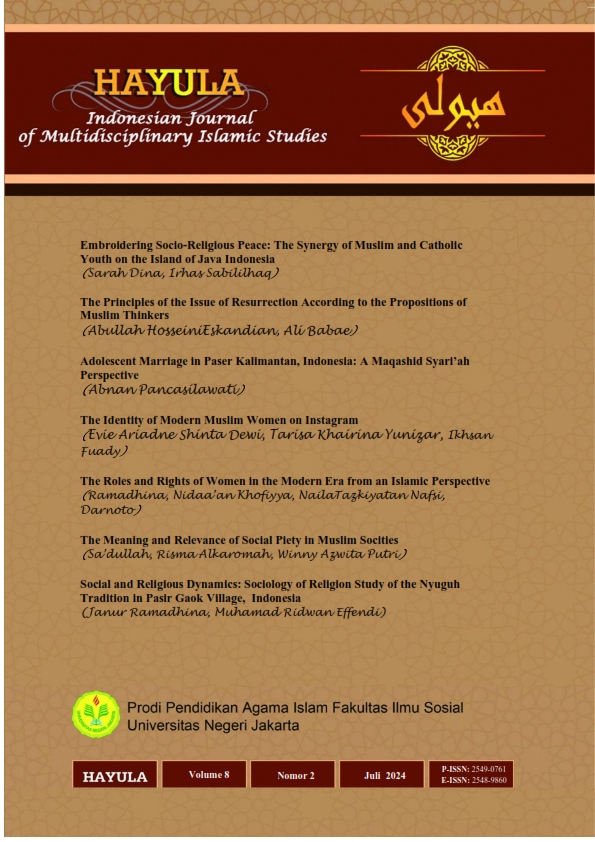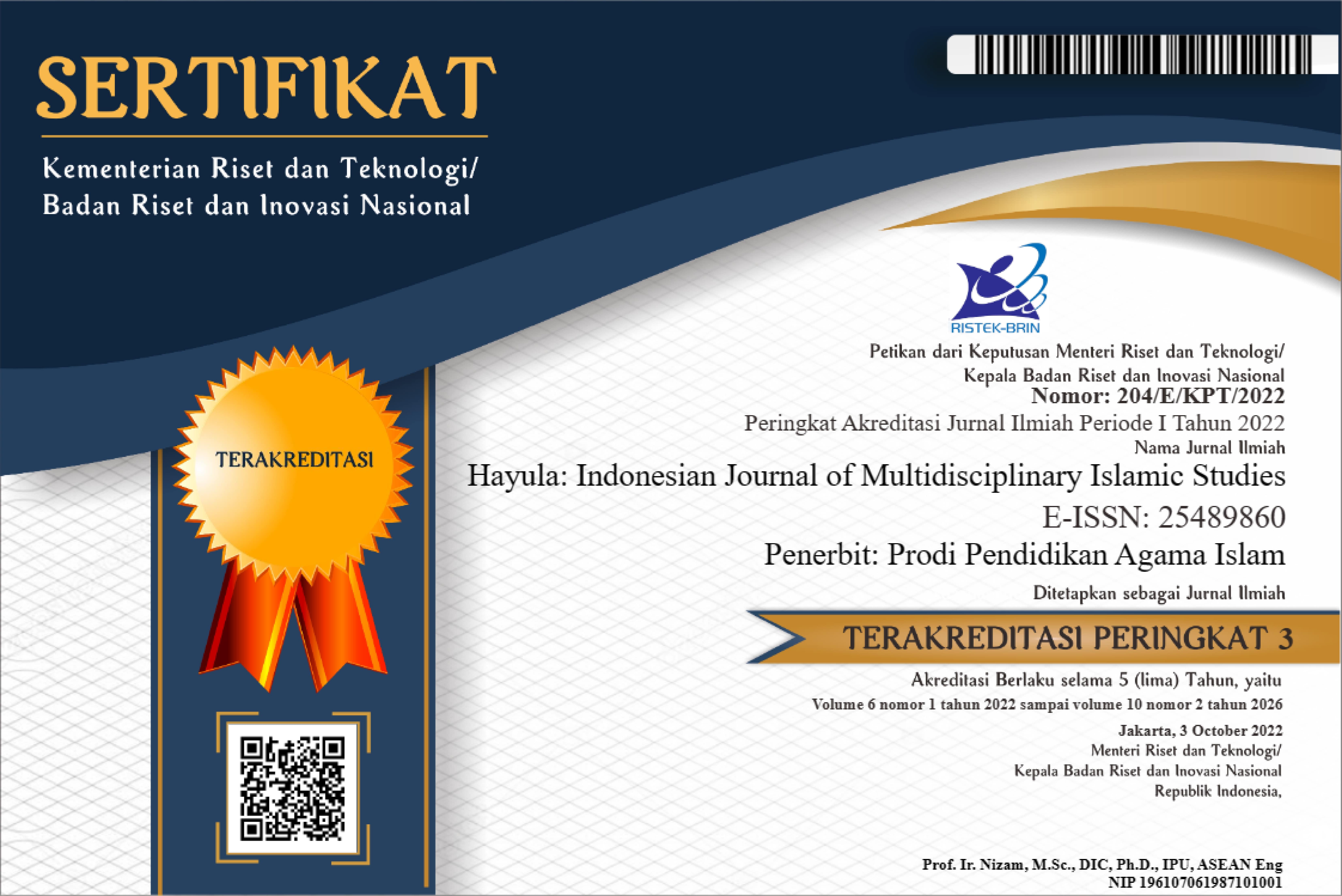The Roles and Rights of Women in the Modern Era from an Islamic Perspective
DOI:
https://doi.org/10.21009/hayula.008.02.05Keywords:
Women's role, modernity, Islamic perspectiveAbstract
particularly in the last few decades. Nevertheless, women are occasionally the victims of social injustice and are consequently regarded as inferior beings. The Islamic tradition, as set forth in the Quran and the hadith, espouses the view that there is no distinction between the rights of men and women. Both genders are provided with an equal opportunity for personal and professional growth across a range of societal roles. This research employs qualitative methods and a literature review. The objective of this research project is to examine the role of women and their rights in the context of Islamic teachings. The study will address two key objectives. The primary objective of this study is to elucidate the role and rights of women in an Islamic perspective. The objective is to identify and analyze the challenges and obstacles that women continue to face in accessing equal educational and economic opportunities, as well as other sectors. These obstacles are shaped by a complex interplay of social norms, conservative religious interpretations, and socio-cultural and structural challenges. To achieve complete gender equality, it is imperative to address these impediments and dismantle the structural barriers that impede women's advancement.
References
Badran, Margot (1995) “Feminism“Dalam John L Esposito (ed), The Oxford Encyclopedia of Modern Islamic World, Vol. 2, Oxford :Oxford University Press.
Beauvoir, Simone De. (2019). Second Sex, Fakta dan Mitos. Yogyakarta: Narasi Dan Pustaka Promethea.
Kementerian Pemberdayaan Perempuan dan Perlindungan Anak Republik Indonesia. (2014). “Karakteristik Rumah Tangga”. Diunduh dari http://www.kemenpppa.go.id/v3/index.php/data-summary/profile- perempuan-indonesia/629 karakteristik- rumah-tangga pada 25 Januari 2015.
Khoiruddin Nasution, Fazlur Rahman Tentang Wanita (Yogyakarta: Tazzafa, 2002), ”pengertian modernisasi menurut para ahli”. Diunduh dari http://www.seputar pengetahuan.com/2014/10/10-pengertian-modernisasi-menurut-para.html pada 28 Desember 2014.
Mernissi, Fatima (2000), Setara di Hadapan Allah, Yogyakarta: LSPPA
Mernissi Fatima (1991), The Veil and the Male Elite, A Feminist Interpretation of Women’s Rights in Islam , Inggris: Perseus Books.
Shihab, Quraish (2002) Tafsir AlMishbah: Pesan, Kesan, dan Keserasian al-Qur’an, Jakarta: Lentera Hati.
Syarif Hidayatullah, Gender dan Islam, Teks dan Konteks, cet. ke-2 (Yogyakarta: PSW UIN Sunan Kalijaga Bekerjasama dengan The Asia Foundation, 2009), Hasbi Indra, et al, Potret Wanita Shalehah, cet. ke-3. (Jakarta: Penamadani, 2005).
Venn, Couze. 2000. Occidentalism: Modernity and Subjectivity. SAGE.
Downloads
Published
How to Cite
Issue
Section
License
Authors who publish with this Journal agree to the following terms:
- Author retain copyright and grant the journal right of first publication with the work simultaneously licensed under a creative commons attribution licensethat allow others to share the work within an acknowledgement of the work’s authorship and initial publication of this journal.
- Authors are able to enter into separate, additional contractual arrangementfor the non-exclusive distribution of the journal’s published version of the work (e.g. acknowledgement of its initial publication in this journal).
- Authors are permitted and encouraged to post their work online(e.g. in institutional repositories or on their websites) prior to and during the submission process, as it can lead to productive exchanges, as well as earlier and greater citation of published works.
Users/public use of this website will be licensed to CC BY







